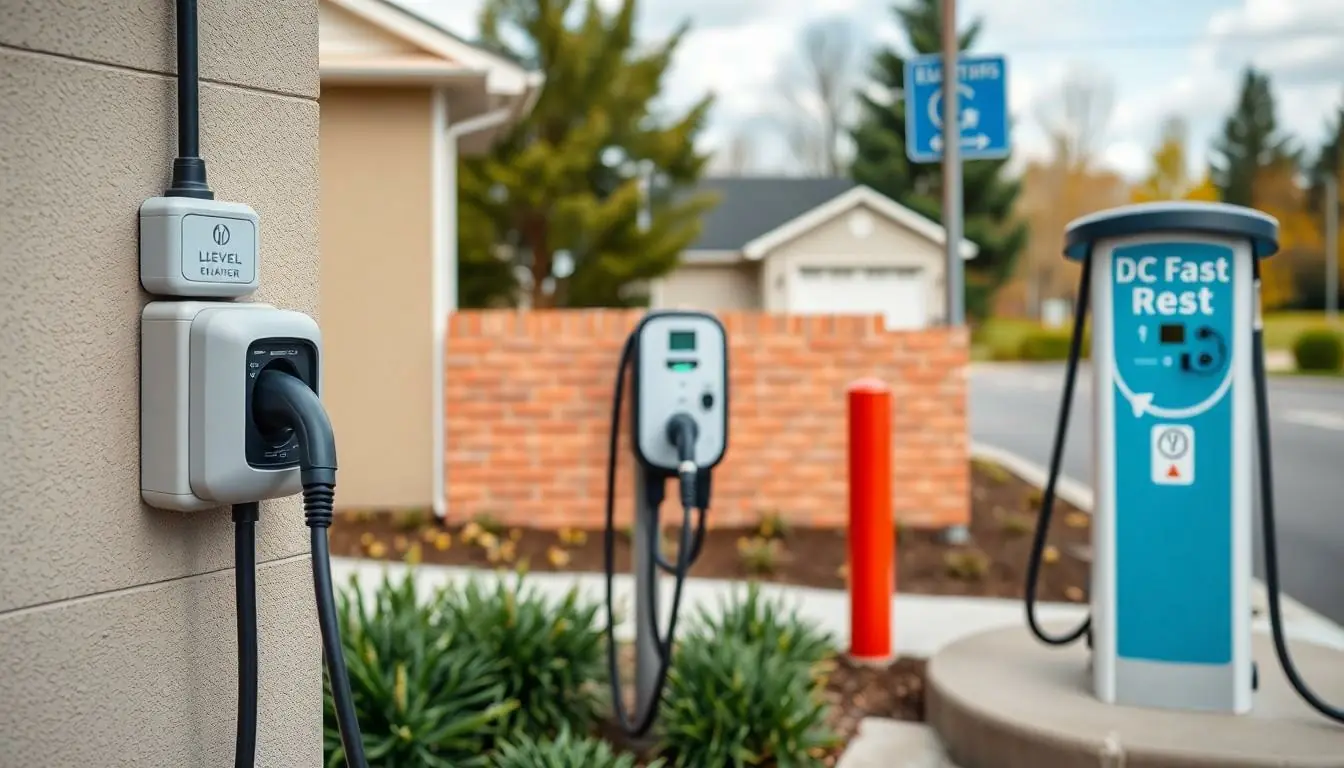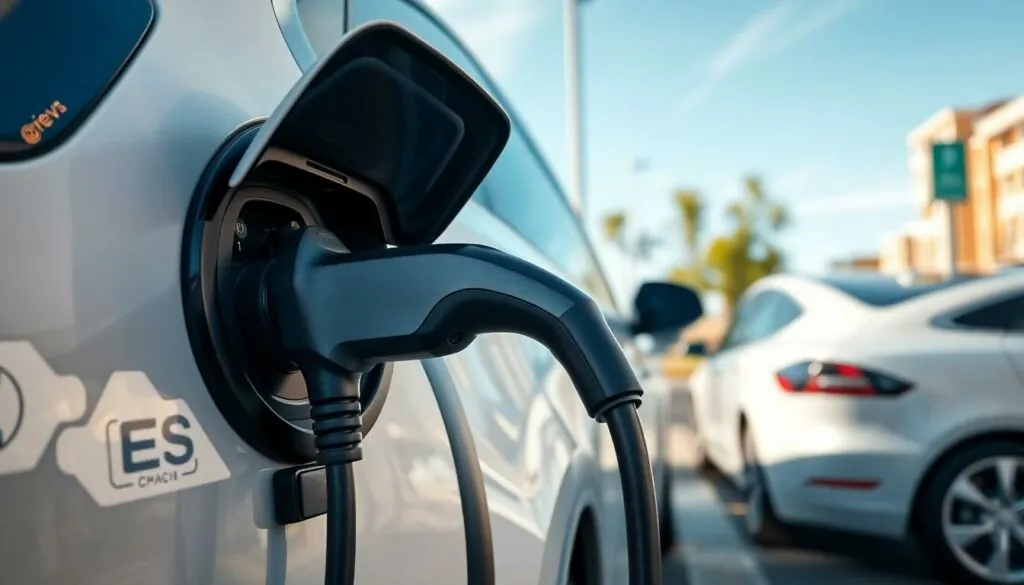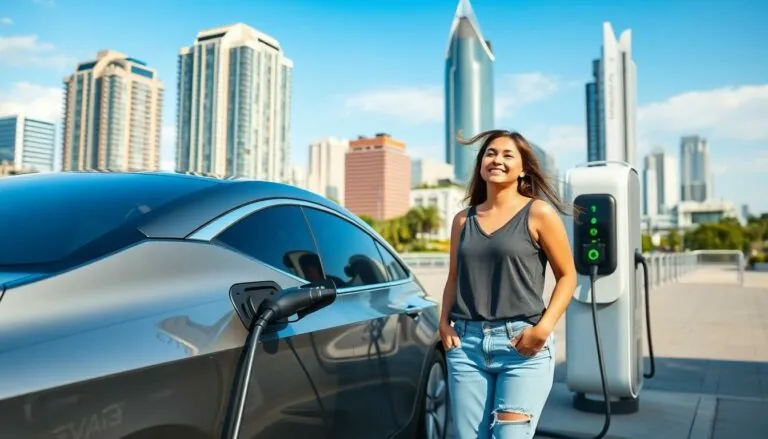Table of Contents
ToggleIn the world of electric vehicles, the only thing more electrifying than the drive is the confusion surrounding chargers. Picture this: you’re ready to hit the road in your shiny new EV, but you find yourself staring at a charging station like it’s a Rubik’s Cube. Do all electric vehicles use the same charger? Spoiler alert: it’s not a one-size-fits-all situation.
The charging landscape can feel like a game of musical chairs, where not every car gets to plug into the same outlet. With different connectors and charging standards, navigating this maze might seem daunting. But fear not! Understanding the ins and outs of EV charging will help you charge ahead without any hiccups. Buckle up as we dive into the electrifying details of EV chargers and uncover what you really need to know.
Overview of Electric Vehicle Charging
Electric vehicle charging involves various types of chargers, each designed to work with specific vehicles. Common charger types include Level 1, Level 2, and DC fast chargers. Level 1 chargers use a standard household outlet and provide slow charging, suitable for overnight charging. Level 2 chargers operate at higher voltages and charge much faster, making them ideal for public charging stations. DC fast chargers deliver the quickest charge, allowing drivers to add significant mileage in a short period.
Different automakers use various connectors, contributing to the confusion. For example, Tesla vehicles utilize a proprietary connector for their Supercharger network. In contrast, the CCS (Combined Charging System) is common for many EV brands, including BMW, Ford, and Volkswagen. CHAdeMO is another connector standard, primarily used by Nissan and Mitsubishi.
Understanding these differences empowers drivers in their EV charging journeys. He or she can check vehicle specifications to determine compatible connectors. Charging stations often display connector types, so users can easily find compatible options. Public charging networks typically provide a mix of charger types, accommodating a wide range of EVs.
Compatibility concerns sometimes arise when drivers consider different charging networks. Not every station supports all connectors, but many networks are working toward standardization. Additionally, adapters are available for some charger types, increasing flexibility for drivers. With the evolving landscape of EV charging, staying informed helps avoid surprises on the road.
Types of Electric Vehicle Chargers

Understanding the different types of electric vehicle chargers is essential for navigating the charging landscape. Various chargers serve specific needs, ensuring drivers find the right one for their vehicles.
Level 1 Chargers
Level 1 chargers utilize standard household outlets, providing a convenient option for overnight charging. Charging times can vary significantly, typically taking 8 to 12 hours to fully charge most electric vehicles. The lower power output of 120 volts makes it ideal for overnight use at home. Drivers appreciate this simplicity, especially those who charge their vehicles while asleep. Most EVs can connect to Level 1 chargers with their standard charging cables without needing additional equipment.
Level 2 Chargers
Level 2 chargers offer faster charging compared to Level 1 options, generally operating at 240 volts. Charging time usually ranges from 4 to 6 hours for a full charge, making it perfect for daily use. Public charging stations often feature Level 2 chargers, allowing drivers to recharge during errands or while at work. Many EV owners install Level 2 chargers at home to optimize charging speed. Connectors used with Level 2 chargers vary; however, most electric vehicles include compatible connectors.
DC Fast Chargers
DC fast chargers deliver the quickest charging experience, using high voltage to minimize downtime. A typical session provides 80% charge in about 30 minutes, making them essential for longer journeys. These chargers are commonly found at major highways and urban locations to support drivers seeking rapid charging solutions. Vehicles equipped for DC fast charging can take advantage of this technology; however, not all models are compatible. Familiarity with the charging requirements of a vehicle will help ensure access to suitable fast chargers.
Standards and Compatibility
Different electric vehicles utilize various charging connectors, making compatibility a significant factor in the EV charging landscape. Drivers must understand the types of connectors available to ensure they can charge their vehicles effectively.
Charging Connector Types
Many charging connector types exist, including Tesla’s proprietary connector, CCS, and CHAdeMO. Tesla’s connector offers unique compatibility for Tesla models, while CCS is prevalent among mainstream brands like BMW and Ford. CHAdeMO primarily supports Nissan and Mitsubishi vehicles, making it essential for these brands. Understanding these connectors allows EV owners to find appropriate charging stations without issues. Adapters are sometimes available, helping to bridge compatibility gaps.
Regional Variations
Charging standards differ regionally, impacting vehicle owners’ charging options. In North America, CCS commonly dominates, while Europe leans towards a mix of CCS and Type 2 connectors. CHAdeMO has more traction in Japan, aligning with local automaker needs. Regulations and policies influence these variations. For optimal charging experiences, drivers should familiarize themselves with regional connector standards and available charging infrastructure. Recognizing these regional nuances aids in navigating the EV landscape effectively.
Common Misconceptions
Many people mistakenly believe that all chargers for electric vehicles are universal. This assumption overlooks the variety of connector types and charging standards that different automakers use. Each manufacturer often has a unique connector, such as Tesla’s proprietary option and the CCS or CHAdeMO standards. Therefore, drivers must check their vehicle specifications to ensure compatibility with available chargers.
Are All Chargers Universal?
Not all chargers operate on a universal system. Tesla vehicles utilize a distinct charging connector, while other brands, like Ford and BMW, predominantly use the CCS standard. CHAdeMO is another different protocol used primarily by Nissan and Mitsubishi. These variations mean that drivers must confirm the type of charger compatible with their particular car model. Adaptability is increasingly becoming available to enhance charging options through adapters.
Differences in Charging Speed
Charging speed varies significantly among different charger types. Level 1 chargers generally take 8 to 12 hours to fully charge an electric vehicle. In contrast, Level 2 chargers reduce this time to around 4 to 6 hours. DC fast chargers offer the quickest solution, capable of delivering an 80% charge in roughly 30 minutes. Understanding these differences allows drivers to select the best charging options based on their needs, whether for overnight charging or quick stops during longer trips.
Future of Electric Vehicle Charging
Innovations in electric vehicle charging are ongoing. Emerging technologies aim to standardize charging systems, simplifying the experience for EV owners. Companies are collaboratively working to create universal connectors that accommodate multiple vehicle brands.
The growth of public charging networks is crucial. Charging stations are increasingly becoming accessible across urban and rural areas, reducing range anxiety. Infrastructure investments enable faster charging options, enhancing convenience for long-distance travel.
Wireless charging is gaining traction. Researchers are developing systems that allow vehicles to charge without physical connectors, improving ease of use. Implementing this technology on roadways could lead to continuous charging while driving, further supporting EV adoption.
Battery swapping is another area of exploration. This model allows drivers to exchange depleted batteries for fully charged ones in minutes, minimizing downtime. Certain areas are already testing this method, particularly in fleets and taxis.
Integration with renewable energy sources enhances sustainability. Solar and wind power are being used for on-site charging, promoting eco-friendly usage. Consumers are becoming more conscious of the environmental impact, making green charging solutions attractive.
Use of mobile applications is rising. These apps assist drivers in locating charging stations, tracking charging times, and checking availability. Increased reliance on technology supports drivers in planning trips efficiently.
Adoption of fast chargers continues to expand. Many manufacturers invest in DC fast charging networks to shorten charging times even further. Studies show that 80% charging in about 30 minutes significantly enhances the EV driving experience, especially for road trips.
Standardization of charging protocols can streamline the process. Organizations like the Electric Power Research Institute advocate for common practices to maximize compatibility. Development in this area contributes to consumer confidence in the electric vehicle market.
Navigating the world of electric vehicle charging can be complex but understanding the differences in chargers and connectors is essential. As the EV market evolves drivers are encouraged to stay informed about the various charging standards and regional variations. This knowledge not only helps in selecting the right charger but also enhances the overall driving experience.
With ongoing advancements in technology and infrastructure there’s hope for greater standardization in the future. As public charging networks expand and innovative solutions emerge the journey toward a more accessible and efficient electric vehicle landscape continues. Staying updated on these developments will empower drivers to make informed choices and enjoy the benefits of electric mobility.




